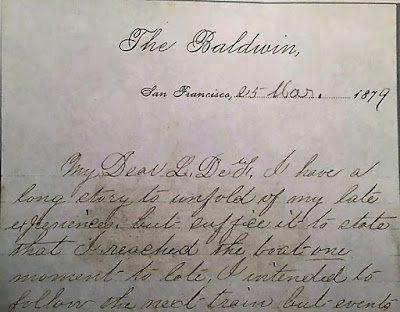 |
From The Mirror, Bates College yearbook, 1909
|
It’s amazing how events can
loom so large in the life of a community – and then time passes, tension
diminishes, secrets are kept, and one is reduced to piecing together the story from newspaper clippings that chip and crumble, leaving your fingers covered in
dirt.
This happened 70 years ago: a
series of events in the Mount Vernon, N.Y., school district that remain particularly opaque. When I called the former superintendent’s daughter, who
sounded very far away even though she was just 100 miles north in Saugerties,
N.Y., she recalled that “something bad happened” in 1945. There was a box of
papers up in the attic, but she never got around to opening it.
After World War II, clashes
between superintendents and school boards became common. Progressive education,
with its emphasis on developmental learning and the arts, faced challenges by
educators who believed it lacked sufficient rigor for the post-war world.
School trustees who had acted as little more than timeservers suddenly wanted
to flex their muscles. Americans harbored greater expectations of the public
schools.
So, what happened in Mt.
Vernon wasn’t unusual. But when the school board voted to force a paid leave of
absence on Superintendent William H. Martin, observers could only conclude that
some questionable business had transpired behind the scenes.
From this long distance, it
looks like the historically Protestant school board felt besieged
by the growing involvement of Italian immigrants in school affairs and the newly-raised
voices of local black leaders. One of the majority led the move to oust
Superintendent Martin and marshaled six votes. Across two months, the board offered
no explanation for the forced leave and Martin would not talk.
Eventually,
public indignation, two investigations, a strongly worded newspaper editorial,
and a ruling by the Corporation Counsel resulted in a compromise: Martin’s
appointment to the position of Elementary Grades Supervisor.
He held that job for the rest
of his short life, dying suddenly in 1954.
Two aspects of the Martin
case are of interest. The first is how the incident was the first public display of
the corruption, fueled by racial and ethnic factions, which persists to this
day on Mt. Vernon’s school board.
Second is William Martin’s
ambivalence about whether he should have taken the position in Mt. Vernon. In
several letters, Martin wistfully reflected on what could have been. Nothing
earth-shaking, just a few expressions of longing that defy the stereotype of a
bespectacled ceremonious “school-man” from New England.
William Harris Martin was
born in Hooksett, N.H. in 1885 and graduated from Bates College; then worked as
an elementary school principal. In 1918 he and his wife of one year, Hazel,
moved to New Haven where Martin commenced work on his master’s degree at Yale
and developed a special interest in the relatively new institution of the
junior high school. Eventually he earned a doctorate.
His mentor at Yale, Frank E.
Spaulding, had arrived just a few years earlier to chair the university’s new
Dept. of Education. Spaulding had served as Superintendent of Schools in Cleveland
and other cities. He was both practitioner and theorist, having received his
PhD at the University of Leipzig under William Wundt (considered a father of
modern psychology).
Frank Spaulding and William
Martin remained close after the latter finished his graduate studies. In 1930,
Spaulding recommended Martin for the position of assistant superintendent of
the Mt. Vernon public schools. In 1940, when the longtime superintendent
retired, Martin was promoted.
 |
William H. Martin's promotion to superintendent was
announced in the September 4, 1940 issue of the Mt. Vernon Daily Argus. |
During the early thirties, Martin
wrote to Spaulding:
I
am wondering if you would be bored if I wrote just a little concerning our
present life in Mount Vernon. We are very pleasantly situated in our home, a
small cottage in a very desirable, newly developing section of the city so that
we are surrounded by woods on three sides and a house on the other. Mrs. Martin
is gradually accumulating friendly contacts and my associations in the schools
are all that could be desired. . .
Nevertheless,
my mind turns back many times to New Haven and especially to the Graduate
School at Yale. I cannot yet quite feel and we do not wish to feel that we have
severed the pleasant connections there. I often think of the kindly interest
that you showed in my work and the friendly way in which you and Mrs. Spaulding
created a happy atmosphere. My only regret is that we are not able to see more
of you now. . .
Two years later, Martin wrote
to his mentor: “My work goes on just about as we planned. I think I am
generally fitting into my place here and being more or less generally useful.”
By the late thirties, Martin had
confided to several friends his frustration with the grind of school
administration. The new chair of Yale’s Dept. of Education, Clyde M. Hill, wrote
to Martin:
I
appreciate fully how you feel about your creative work. Administrative jobs
have a habit of getting in the way of other things we would like to do. Perhaps
both of us can look forward to writing our masterpieces in the near future,
and, when they appear, the educational world will have to “look out”.
Surely the Mt. Vernon school
trustees and Martin’s colleagues did not know how much the superintendent missed
the familiar community of Yale/New Haven and harbored regrets about getting
wound up in the business of schooling, which is quite different from the study
of education.
One wonders, though, about
the extent to which the superintendent’s melancholy revealed itself to others.
If it did, perhaps there are even more secrets about the events of 1945.
https://www.throughthehourglass.com/2015/12/no-sunlight.html















